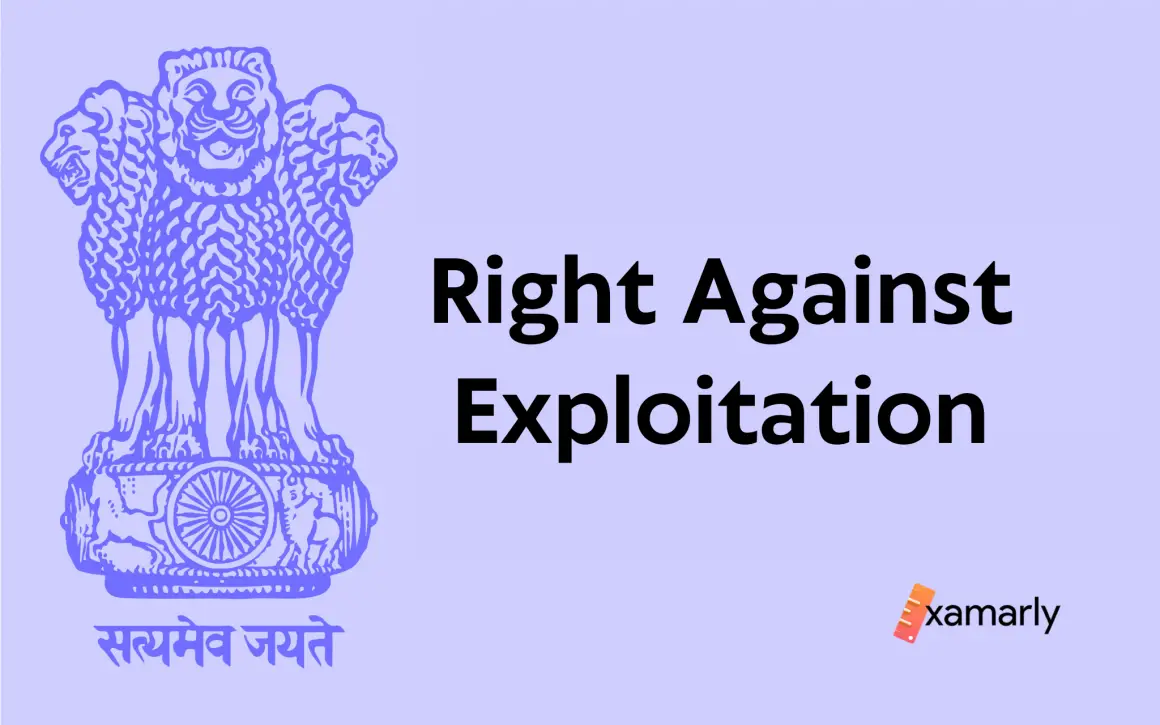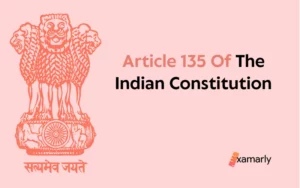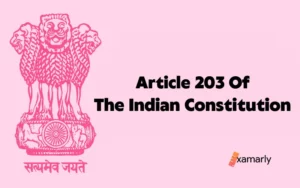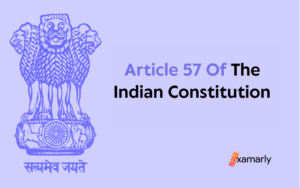India is currently the world’s largest democracy in terms of population. However, in the past, the country and its people have faced a long history of slavery. The Indian Penal Code, 1860 was a significant legislation that helped to abolish the slavery system in India. Additionally, the framers of the Indian Constitution included the Right against Exploitation under Articles 23 and 24, in order to prohibit any activities that exploit individuals or groups.
The Indian Constitution guarantees dignity and liberty for every citizen, which serves as a barrier against exploitation. This means that every individual is entitled to respect and autonomy, and any actions that infringe upon these rights are prohibited. The Constitution ensures that the exploitation of one’s labor, resources, or person is unacceptable and that the government should provide protection and support to the victims.
- What is meant by "Exploitation"?
- Right Against Exploitation – Provisions
- Right Against Exploitation Under Article 23
- Article 23(2) – Exceptions
- Case Studies
- People’s Union for Democratic Rights v. Union of India (1983)
- Bandhua Mukti Morcha v. Union Of India (1984)
- Sanjit Roy vs State of Rajasthan (1983)
- Deena v. Union of India (1983)
- Neerja Choudhary v. State of Madhya Pradesh (1984)
- Right Against Exploitation Under Article 24
- Case Studies
- Child Labour (Prohibition and Regulation) Act, 1986
- Conclusion
- FAQs Related To Right Against Exploitation
- What are articles 23 and 24 of the Indian Constitution?
- What does the Right Against Exploitation under Articles 23 and 24 of the Indian Constitution protect against?
- Are there specific laws in place to protect the rights of laborers and children in India?
- What are some common forms of exploitation witnessed in India?
- How can we combat exploitation in India?
- What are the penal actions taken against the violators of Articles 23 and 24 of the Indian Constitution?
- Who can file a complaint against the exploitation under articles 23 and 24 of the Indian Constitution?
- What are the remedies available for the victim of exploitation under articles 23 and 24 of the Indian Constitution?
What is meant by “Exploitation”?
The term “exploitation” is borrowed from the French language and refers to the act of depriving a person of their rightful share, reward, or remuneration through force or deception. Exploitation occurs when an individual is not compensated for the labor and services they have contributed to the production of wealth. This can include situations where a person is not receiving a fair pay for their work or is being forced to work against their will. Exploitation is the act of depriving a person of their rightful share, reward, or remuneration through force or deception.
Right Against Exploitation – Provisions
The constitution has measures in place to protect vulnerable groups from being taken advantage of and to promote individual freedom.
This can be found in Article 23, which prohibits forms of human trafficking such as forced labor and beggar labor and carries legal consequences for violators.
Article 24 also contains a provision to prevent the exploitation of children by prohibiting the employment of children under the age of 14 in hazardous work environments such as mines or factories.
Right Against Exploitation Under Article 23
Prohibition of traffic in human beings and forced labour
(1) Traffic in human beings and begar and other similar forms of forced labour are prohibited and any contravention of this provision shall be an offence punishable in accordance with law.
(2) Nothing in this article shall prevent the State from imposing compulsory service for public purposes, and in imposing such service the State shall not make any discrimination on grounds only of religion, race, caste or class or any of them.
Article 23 of the Indian Constitution, in its first clause prohibits three forms of exploitation: trafficking, begar, and forced labor. It also states that any violation of this prohibition will be considered an offense. The parliament has the authority under Article 35 to create laws that prescribe punishment for any actions prohibited under Part III of the constitution.
In exercising this power, the parliament has passed several laws that prohibit forced labor, begar, and trafficking. These laws include the Suppression of Immoral Traffic in Women and Girls Act, 1956 and the Bonded Labour System (Abolition) Act, 1976. These laws were passed in accordance with Article 23 to provide legal consequences for those who violate the prohibition on exploitation.
Traffic In Human Beings
Traffic in human beings refers to the illegal and immoral practice of buying and selling people as if they were merchandise, for use in criminal or unethical activities or other purposes. This includes the trafficking of women for the purpose of sexual exploitation. To address this problem, the Indian Parliament has passed the Immoral Traffic (Prevention) Act, 1956, which aims to combat the trafficking of women and children for immoral purposes.
This Act is a legislation aimed at preventing the exploitation of women and children in the sex trade. It is designed to suppress the organized criminal activity of prostitution and to protect women and children from being exploited in this manner. The Act provides for the punishment of those involved in the trafficking, procurement and management of women and children for prostitution. It also provides for preventive measures and for the rescue and rehabilitation of the victims of such trafficking. It is a criminal offense under Indian law and any person found guilty of the offense is liable to be punished with imprisonment and/or fine.
Begar
Begar refers to work that is performed without payment and without the free and informed consent of the person doing the work. It is a form of forced labor where a person is made to work without receiving any compensation for their labor. This practice was common in the former princely states of India. However, it has been abolished by Article 23(1) of the Indian Constitution.
Article 23(1) prohibits forced labor, including begar, and makes it a fundamental right that no person shall be forced to do any labor without fair compensation. The provision aims to protect the rights of workers and to ensure that they are not subjected to exploitative labor practices. The practice of begar is considered as a violation of human rights and it is considered as an infringement of the dignity and freedom of a person.
The government is also responsible for the implementation of the provision to take necessary steps to prevent such practices and to punish those who violate the provision. The provision is also supported by other laws such as the Bonded Labour System (Abolition) Act,1976 to prevent the exploitation of workers and to ensure fair compensation for their labor.
Forced Labour
The phrase “other forms of forced labor” used in Article 23(1) of the Indian Constitution is to be understood as being similar in nature to the terms “begar” and “traffic in human beings.” This means that the type of forced labor prohibited by this Article must be of a similar nature to the forms of begar and human trafficking. The Supreme Court of India has given a broad interpretation to the term “forced labor” in order to encompass a wide range of exploitative practices.
This means that the provisions of Article 23(1) of the Indian Constitution are not limited to the specific forms of forced labor mentioned in the article, but also include other forms of forced labor that are similar in nature. The court has interpreted the term in a manner that encompasses various forms of exploitation, including forced labor and all other forms of forced labor that violate human rights and dignity. This interpretation ensures that the provisions of Article 23(1) are able to effectively protect the rights of workers and to ensure that they are not subjected to exploitative labor practices.
Bonded Labour System
Bandhua Majdoor is another form of forced labor, where a person is obligated to work for another person for an extended period of time, often until a debt is repaid. This system is often used to exploit vulnerable individuals by those who are socially and economically more powerful. To address this problem, the Indian Parliament has passed the Bonded Labour System (Abolition) Act, 1976, which aims to combat the practice of bonded labor.
The Act makes the practice of bonded labor illegal and provides for the release of bonded laborers and their rehabilitation. It also provides for the recovery of wages and other dues of the bonded labourer. This Act also provides for the punishment of those who violate the provision and for the protection of bonded labourers. The Act also provides for the constitution of a Bonded Labour Rehabilitation Fund and the constitution of an Advisory Board to advise the Central Government on the implementation of the Act. The Act is aimed at protecting the rights of workers and to ensure that they are not subjected to exploitative labor practices.
Article 23(2) – Exceptions
For certain public goods such as national security, eradicating illiteracy, or ensuring the efficient functioning of public utilities like water, electricity, postage, train, and air services, the state may require mandatory services. However, the state is not allowed to discriminate based on religion, caste, race, or class (in a financial context) while imposing such requirements for public reasons.
It is worth noting that sex is not considered a prohibited basis for discrimination, thus women may be excluded from being required to serve in the public sector. To date, India has not passed a similar law at the national level. The only exception to this was a brief period in Nagaland, where a legislation existed that allowed for able-bodied individuals to be called upon to help with blood impediments.
Case Studies
People’s Union for Democratic Rights v. Union of India (1983)
The Supreme Court of India interpreted the scope of Article 23 by examining the working conditions of various individuals employed by Asiad projects. The petitioner in this case found that the workers were highly exploited, receiving wages below the minimum rate and enduring poor working conditions. The case was filed as a Public Interest Litigation (PIL).
Justice PN Bhagwati noted that Article 23 has a broad and unrestricted scope, it not only prohibits “begar” but also any forms of forced labor, regardless of its existence. According to the court, forced labor of any kind is not allowed.
The court emphasized that no one should be made to do labor or services against their will, even if it is specified in a service agreement. Under Article 23, the term “force” has a broad definition which includes situations where a person is forced to work against their will for less than minimum wage due to economic pressure or physical or legal pressure.
Bandhua Mukti Morcha v. Union Of India (1984)
An organization called Bandhua Mukti Morcha fights against India’s widespread system of bonded labor. This case was unique because it was the first time that the court accepted a letter from J. Bhagwati as a Public Interest Litigation (PIL) petition. The letter outlined the suffering of numerous laborers who were subjected to unbearable and inhumane working conditions in the Faridabad region of Uttar Pradesh.
The court established guidelines for identifying bonded workers and made it clear that it was the responsibility of the state government to locate, free, and rehabilitate the bonded workers. This case highlights the efforts of the Bandhua Mukti Morcha organization to raise awareness and combat the problem of bonded labor in India, as well as the court’s recognition of the issue and its role in addressing it through the establishment of guidelines and allocation of responsibility to the state government.
Sanjit Roy vs State of Rajasthan (1983)
In this case, the state had employed individuals for the construction of roads under the authority of the Famine Relief Act. However, it was argued that the workers were paid significantly less than the minimum wages, in violation of Article 23.
The court ruled that the state is not permitted to exploit the vulnerability of individuals under the guise of providing assistance during a famine or drought. The court recognized that these workers should be fairly compensated for their labor and the benefits it provides to the state.
The court noted that paying less than minimum wages to workers who are providing labor in times of famine or drought is not acceptable and that the state must ensure that the workers are paid fairly for the work they put in. This is a clear indication that the court believes in protecting the rights of the workers and ensuring that they are not exploited during vulnerable times.
Deena v. Union of India (1983)
The court ruled that if prisoners are made to perform labor without being paid fair wages, it constitutes a violation of Article 23 of the Constitution. This is because it impacts the dignity and freedom of individuals.
Furthermore, forcing prisoners to work without fair compensation is a form of exploitation, which is prohibited under Article 23. The court’s decision highlights the importance of ensuring that the rights of prisoners are protected and that they are not subjected to exploitative labor practices. Additionally, this decision is a reminder that everyone has the right to fair compensation for their labor, regardless of their circumstances.
Neerja Choudhary v. State of Madhya Pradesh (1984)
In the case of Neerja Choudhary v. State of Madhya Pradesh, 1984, the Supreme Court of India established that when a worker is compelled to perform labor without fair compensation, it is presumed to be a case of bonded labor, unless the employer can prove otherwise. The Court also emphasized that the failure of the government to enforce the Bonded Labour System (Abolition) Act, 1976 would be a clear violation of Articles 21 and 23 of the Constitution which protect the right to life and personal liberty and the prohibition of traffic in human beings and forced labour respectively.
The court’s decision in this case emphasizes the importance of protecting the rights of workers and ensuring that they are not subjected to exploitative labor practices. The decision also highlights the government’s responsibility to enforce laws that protect workers and to hold employers accountable for any violations of these laws. Furthermore, the court’s decision emphasizes the importance of protecting the rights of workers and ensuring that they are not subjected to exploitative labor practices and the failure of government to enforce laws that protect workers is considered as violation of the rights of citizens.
Right Against Exploitation Under Article 24
Prohibition of employment of children in factories, etc.
No child below the age of fourteen years shall be employed to work in any factory or mine or engaged in any other hazardous employment.
Article 24 of the Indian Constitution states that no child under the age of 14 years old shall be employed to work in any factory, mine, or engaged in any other type of hazardous employment. The article is aimed at protecting the rights of children and ensuring that they are not subjected to dangerous working conditions at a young age. The prohibition of child labor in hazardous environments is an important measure to safeguard the well-being and development of children and to prevent them from being exploited. The language of the article is clear, that is no child below the age of 14 should be employed in any factory or mine or in any other hazardous occupation.
Case Studies
Peoples Union for Democratic Rights v. Union of India (1982)
The Supreme Court of India determined that construction work is a particularly dangerous job that should not be performed by anyone under the age of 14.
In addition, the court also highlighted the horizontal aspect of Article 24, which means that it applies to both the state and private individuals. This means that the prohibition against employing children under the age of 14 in hazardous occupations, as outlined in Article 24, applies not only to government entities but also to private individuals or organizations.
The court emphasized that the protection of children’s rights and safety is not limited to the actions of the state, but extends to the actions of private individuals and organizations as well.
MC Mehta Vs. State of Tamil Nadu
The Supreme Court of India, in the case of M.C. Mehta v. State of Tamil Nadu in 1997, determined that it is illegal for children under the age of 14 to be employed in any industry or work environment deemed hazardous, including mines. The court established guidelines to safeguard the rights of children, including their economic, social, and humanitarian rights.
Furthermore, the court emphasized the importance of employers adhering to the regulations outlined in the Child Labour (Prohibition and Regulation) Act of 1986, which prohibits the employment of children in certain hazardous occupations and regulates the working conditions of children in non-hazardous occupations.
The Supreme Court commanded the creation of a fund for the rehabilitation and welfare of child labourers, and required the employer to give each child a compensation of Rs. 20,000.
Child Labour (Prohibition and Regulation) Act, 1986
The Child Labor (Prohibition and Regulation) Act, 1986 is a law in India that aims to combat child labor by prohibiting and regulating the employment of children. This law defines a child as a person under the age of 14. The act specifies which occupations and procedures children are prohibited from working in and where and how they may be employed. The law prohibits children from working in 13 specific occupations and 57 specific procedures, which are considered hazardous to their health and development.
This act is considered a significant step in protecting the rights and welfare of children in India.
Amendments in 2016
The Child Labor (Prohibition and Regulation) Amendment Act of 2016 is a law in India that prohibits and regulates child labor.
The law specifically prohibits the employment of children under the age of 14 and prohibits individuals between the ages of 14 and 18 from working in hazardous activities or processes. This amendment has strengthened the penalties for breaking this law. Additionally, the Act allows for young people to work in a variety of household jobs and as artists.
This law was passed to further protect the rights and welfare of children in India, by prohibiting the employment of children in hazardous work and by empowering young people to work in safe and appropriate jobs.
Amendments in 2017
In 2017, the government of India issued rules to establish a comprehensive and specific framework for preventing, prohibiting, rescuing and rehabilitating child and adolescent workers. These rules were designed to clarify concerns related to the employment of children in family businesses and to provide protection for child artists by defining their working hours and conditions.
The objective of these rules is to ensure that children are protected from exploitation and abuse in the workplace and to ensure that their rights are upheld. These rules provide a detailed guideline for the implementation of the Child Labor (Prohibition and Regulation) Act, 1986, and the Child Labor (Prohibition and Regulation) Amendment Act, 2016, and are aimed at ensuring the welfare and protection of children in the country.
Conclusion
A civilized society should not allow or condone the exploitation of children through practices such as child labor. Despite laws being put in place to prevent it, such as those outlined in articles 23 and 24, the issue remains prevalent in countries like India where there are over 42.7 million uneducated children and 10 million child laborers.
It is unfortunate that those in positions of power continue to exploit and take advantage of those who are weaker. The problem of trafficking, bonded labor, and forced labor are still prevalent in many places. To address this problem, it is important to focus on educating the public and raising awareness, coordinating the efforts of relevant authorities, raising funds, and creating job opportunities to combat these issues.
To wrap up, this article has discussed the Right Against Exploitation as outlined in Articles 23 and 24 of the Indian Constitution. The purpose of these articles is to safeguard the dignity and freedom of individuals. As we have discussed, child labor, bonded labor, and human trafficking are some of the most prevalent forms of exploitation in India. However, there are specific laws in place to protect the rights of laborers and children and to preserve their dignity and freedom. We hope that you found the information provided in this article to be both useful and informative.
FAQs Related To Right Against Exploitation
What are articles 23 and 24 of the Indian Constitution?
Articles 23 and 24 of the Indian Constitution are part of the fundamental rights section of the Constitution and deal with the prohibition of traffic in human beings, forced labor and beggar, and the prohibition of employment of children in factories, etc.
What does the Right Against Exploitation under Articles 23 and 24 of the Indian Constitution protect against?
The Right Against Exploitation under Articles 23 and 24 of the Indian Constitution protects against practices such as human trafficking, forced labor, and child labor.
Are there specific laws in place to protect the rights of laborers and children in India?
Yes, there are specific laws in place in India to protect the rights of laborers and children, such as the Bonded Labour System (Abolition) Act, 1976 and the Child Labour (Prohibition and Regulation) Act, 1986.
What are some common forms of exploitation witnessed in India?
Some common forms of exploitation witnessed in India include child labor, bonded labor, and human trafficking.
How can we combat exploitation in India?
To combat exploitation in India, it is important to focus on spreading knowledge, raising awareness, coordinating the activities of the relevant authorities, raising money, and establishing job opportunities.
What are the penal actions taken against the violators of Articles 23 and 24 of the Indian Constitution?
Violation of the provisions of articles 23 and 24 is a cognizable offence and the violators are punished with imprisonment and/or fine as per the provisions of the laws framed under these articles.
Who can file a complaint against the exploitation under articles 23 and 24 of the Indian Constitution?
Any person who has knowledge of the exploitation or any person who is a victim of exploitation under articles 23 and 24 can file a complaint to the relevant authorities.
What are the remedies available for the victim of exploitation under articles 23 and 24 of the Indian Constitution?
The remedies available for the victim of exploitation under articles 23 and 24 of the Indian Constitution include compensation, rehabilitation, and protection from further exploitation.






